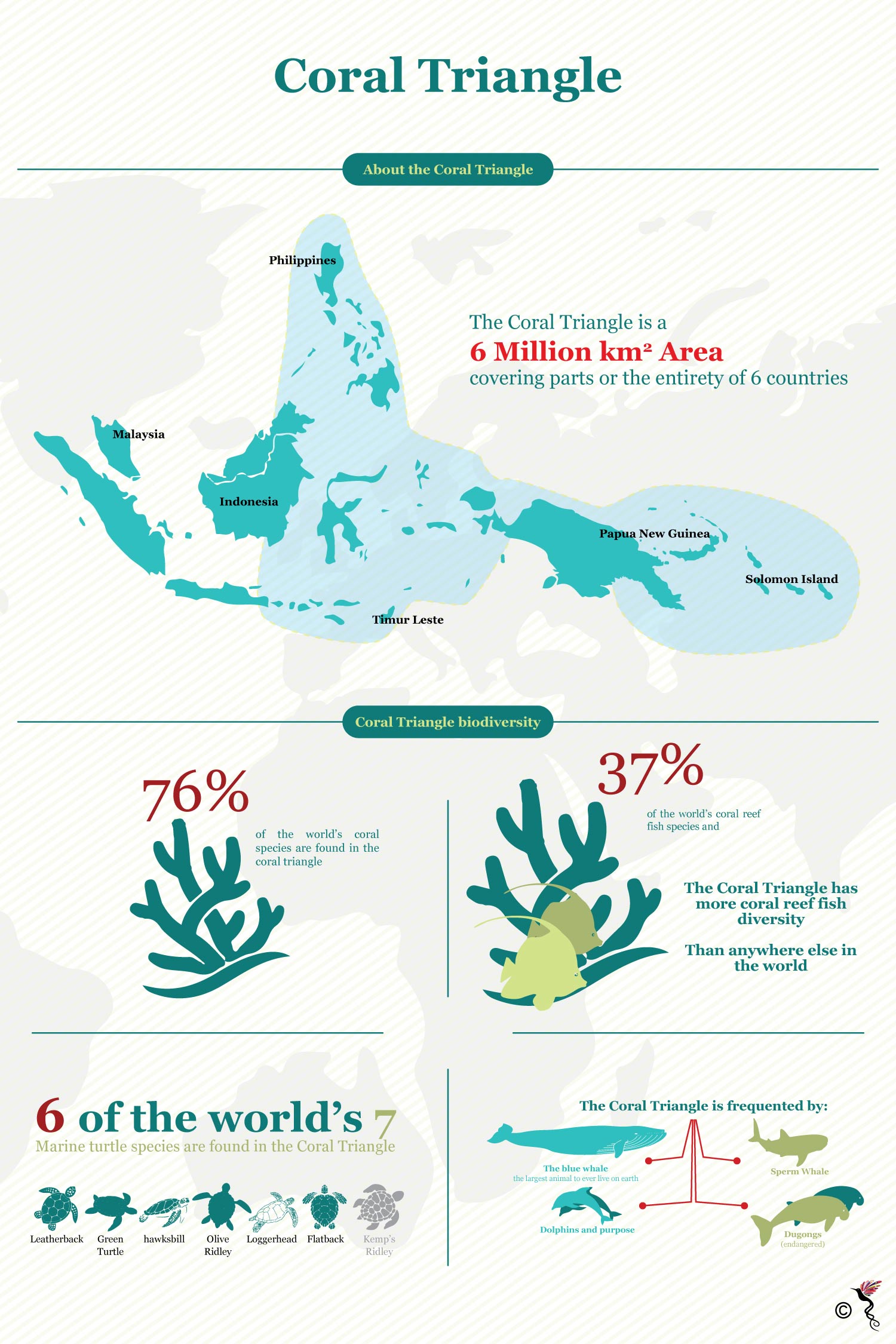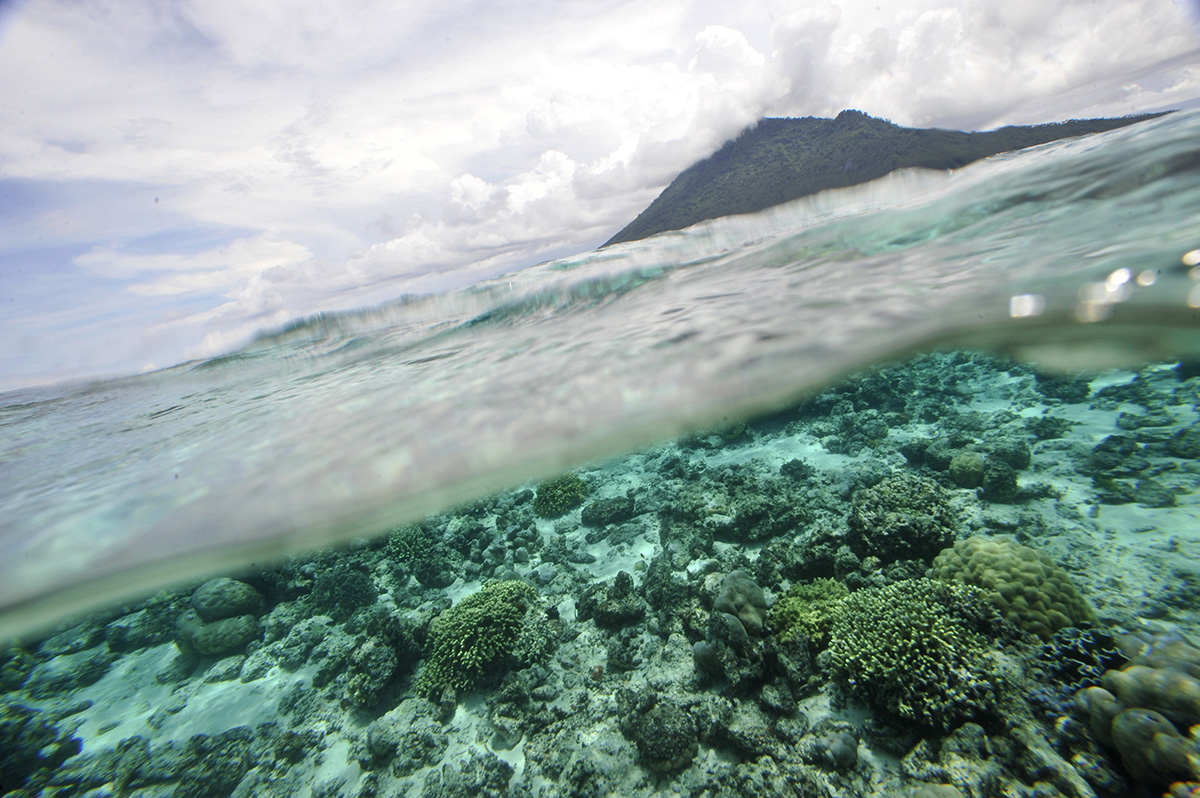Like grains of sand by the seaside, the diversity within ASEAN (the Association of Southeast Asia Nations) countries is not limited to the cultures in the ten countries populated with 625 million souls. Highlighting the territorial waters that cradle the region three times over the size of its land; Thailand, Indonesia, Malaysia and the Philippines act as host to rich biodiversity that attracts visitors from all over the world to witness marine life at its best.
Donsol in the province of Sorsogon in the Philippines, is a popular tourist destination for whale shark interaction. According to the WWF-Philippines (World Wide Fund for nature Philippines), Donsol has risen from a fifth-class to a first-class municipality since a community-based whale shark ecotourism programme was established in 1998. The local government, in partnership with top environment solutions provider WWF-Philippines and tourism stakeholders, have played a huge role in the development of the programme. Whale sharks congregate in the Donsol Bay because of the large concentrations of plankton which feed on the nutrients discharged by the town’s rivers. Whale sharks can usually be seen from December to May, with sightings peaking between February and May when plankton levels are highest. Fifteen years ago, WWF-Philippines partnered with the local government and other tourism stakeholders to develop a community-based whale shark ecotourism programme while establishing guidelines for whale shark interactions. The ecotourism programme has generated jobs for locals – many of which are now tour guides, BIOs (Butanding Interaction Officers), boat crew members, captains, homestay owners, resort staff and associated service providers. With ecotourism as the town’s primary lifeblood, the efforts in Donsol are aimed at improving revenue and reviving slumping visitor arrivals by leveraging on other activities like firefly watching and tours to nearby isles like pristine Ticao Island. Today, Donsol’s community-based whale shark ecotourism programmes stand as one of the best sustainable wildlife interaction offerings in Southeast Asia.
The Republic of Indonesia is the most expansive archipelago in the world that is made up of 17,508 individual islands and a diverse range of marine habitats, a diversity that has led to one of the richest elasmobranches (sharks, skates and rays) assemblages in the world.
Indonesia’s manta rays, mainly in the sea surrounding the Solor Archipelago, have been declining in numbers due to increasing demand for manta gills used in medicine and the expansion of commercial fisheries. The Manta Project founded in 2007, is helping to increase the community's understanding of this species and threats that manta rays are facing. The project will also contribute towards conservation goals, raising public awareness and provide sustainable economic benefits for the local communities.
Bunaken Park was established as a National Park in 1991. The national park covers the islands of Bunaken, Manado Tua, Mantehage, Siladen, Nain and parts of Arakan Wowontulap, covering a total area of 89,065 hectare. The WWF (World Wildlife Fund) has also placed Bunaken National Park as the main site for the Sulu Sulawesi Marine Ecoregion work plan. A comprehensive action plan would help assess the ecoregional status of biodiversity, habitat condition and socio-political condition that could potentially influence conservation of the region’s ecosystem. If the provided breeding areas are well maintained, then this species has a better chance of survival while facing extinction.
In the southeastern Sulawesi of Indonesia, the Wakatobi is made up of four islands: Wangi-wangi, Kaledupa, Tomia and Binongko. It has the highest number of reef and fish species in the world, as well as the largest barrier reef in Indonesia, second in the world only to the Great Barrier Reef in Australia.
Cracking out of shells under the sand after nearly 60 days to the rumbling roars of the waves are hundreds of Hawksbill’s sea turtles’ hatchlings who crawl towards the sea instinctively.
Four out of the six species of sea turtles lay their eggs on the coastlines of Peninsular Malaysia, creating ecotourism opportunities for its surrounding communities. A popular attraction for families – peninsular islands such as Redang and Tioman, as well as beach towns like Cherating and Penang – turtle sanctuaries are not only a favourite tourist destination, but also serve as a tremendous help to the ongoing efforts in preserving the marine ecosystem in Malaysia and the Southeast Asian region.
Malaysia’s largest marine reservation, Tun Mustapha marine park, and the shark sanctuary in the northern tip of Borneo is the result of a 13-year effort based on strategic planning and frequent negotiations to develop an ecological sustainable way that will benefit thousands of people whose livelihoods depend on fisheries within the Coral Triangle’s bioregion.
The Coral Triangle
The Coral Triangle, made up of a marine region covering an area spanning across six million square kilometres, supports at least 500 coral reef species in parts of Indonesia, Malaysia, Papua New Guinea, the Philippines, the Solomon Islands and Timor Leste. It has 15 regionally endemic coral species while it shares 41 regional endemic species with Asia.

Facts on the Coral Triangle as provided by the WWF (World Wide Fund).
The Coral Triangle plays a substantial role in nature-based tourism industry, which is valued at more than 12 billion dollars annually. This has made the Coral Triangle a rapidly growing economic hub emerging in the region.
Thailand is thriving as an ecotourism hotspot for international tourists, prompting the Thai government to conserve its resplendent natural beauty from the land to the sea. In the southern west of Thailand, tourists are captured by its breath-taking sceneries with white, sandy beaches and islands surrounded by the sea such as the Gulf of Thailand, which covers a surface area of 123,553 square miles.
At the eastern province of Thailand, Huai Raeng, which is also known as the "Land of Three Waters", tourists are treated to a wonderful experience with marine life which involves coral reefs, natural islands and a shelter for dolphin, black tip reef sharks, turtles, manta rays and sea otters at the Ang Thong National Marine Park and while doing so, tourists can enjoy a leisurely stay in guest houses, beach resort and village houses.
At the Khao Laem Ya Mu Ko Samet Marine National Park, the TAT (Tourism Authority of Thailand) kicked off the “Upcycling the Oceans, Thailand” project during its opening ceremony this month. Thailand became the first Asian country to join the "Upcycling the Oceans" clean-up initiative, which is held as part of a global initiative organised by the Ecoalf Foundation in order to clean the ocean.
“As part of the organisation’s CSR strategy, the project reaffirms the TAT’s commitment to promoting responsible tourism and its leadership role in driving green initiatives, bringing together over one hundred divers and volunteers from the TAT and the PTTGC (Petroleum Authority of Thailand Global Chemical) to remove trash from the seabed and along the beach on Ko Samet.” the governor of TAT, Yuthasak Supasorn said on its website.
Economic impact of sea-based tourism
Southeast Asian countries are the most sought-after travel destinations due to their beautiful sandy beaches, islands and sceneries – especially in Indonesia, Thailand and the Philippines. The most visited places in Indonesia is Bali, Lombok, Raja Ampat and Wakatobi. The Philippines is known for its beautiful islands like Boracay, Palawan, Batanes, Malapascua and Kalanggaman while in Thailand, famous tourist spots include Koh Phi Phi, Railay Beach, Phuket and Krabi. These places are ideal for water-sport activities such as snorkelling, yachting, jet skiing, para-sailing and fun tubing. These activities create an economic impact which benefits these countries and its communities by offering job opportunities. Other sectors like hospitality and leisure, food and beverages, transportation as well as travel agencies would also benefit from the surge in travel demands. It will also open up more opportunities for new investments into these countries and increases foreign exchange earnings. This would eventually contribute to their GDP (gross domestic product) growth.
According to the Indonesian Central Bureau of Statistics, international tourist arrivals to Indonesia from January to October 2016 has reached 9.4 million, up 9.54 percent year-on-year. In 2017, Indonesia is targeting 15 million tourists or a 25 percent growth. The Philippines Department of Tourism said international tourist arrivals to the Philippines rose more than 14 percent from January to May 2017 compared to 2.8 million visitors a year ago. The positive growth in arrivals can be attributed to aggressive marketing efforts and international events which included the ASEAN@50 meetings that was held in the country. According to the Tourism Authority of Thailand, the country has received 17.3 million tourists, generating 876 billion baht (25 billion dollars), in the first half of 2017.
Under the ASEAN Tourism Strategic Plan 2016-2025, it is anticipated that the GDP contribution of ASEAN tourism will increase from 12 percent to 15 percent, tourism’s share of total employment will increase from 3.7 percent to seven percent and per capita spending by the international tourist will increase from 877 dollars to 1,500 dollars – by 2025. ASEAN is emerging as a dynamic region with a population of over 600 million, rich natural resources and a relatively stable environment. It is expected to be a top tourism destination offering a unique, diverse ASEAN experience and will be committed to responsible, sustainable, inclusive and balanced tourism development, so as to contribute significantly to the socioeconomic well-being of ASEAN people by 2025.
(Shenntyara Mirtha contributed to this article)
